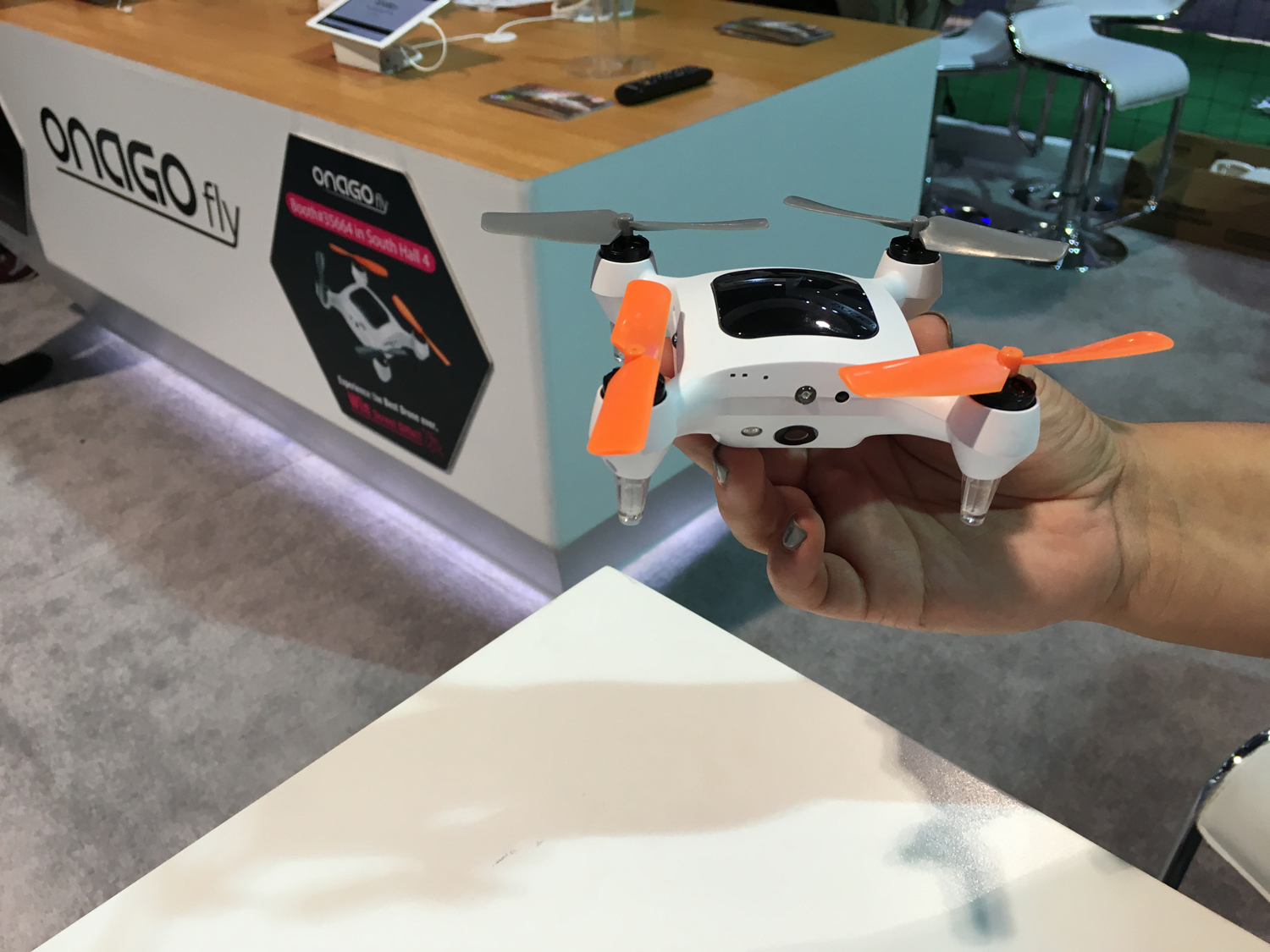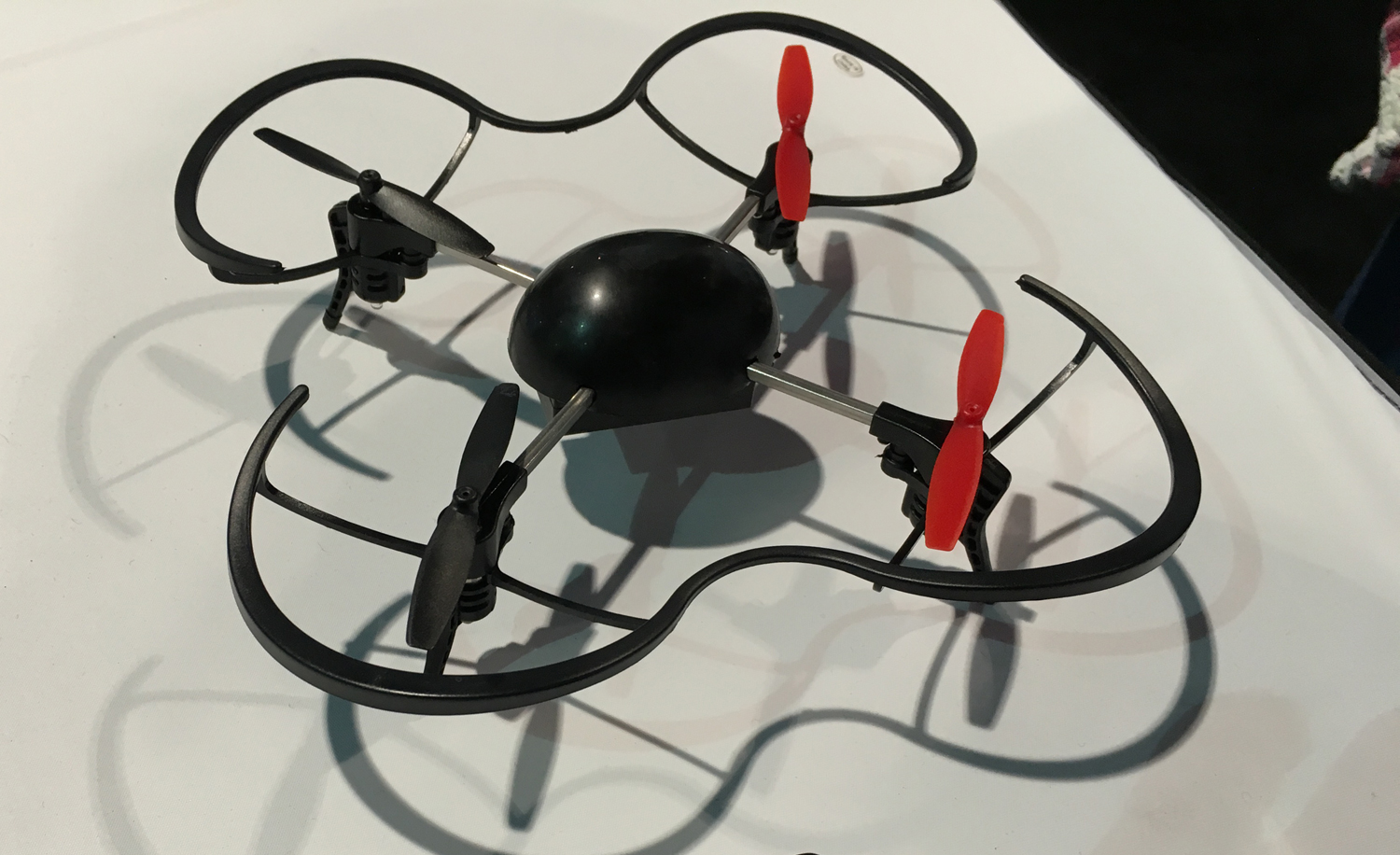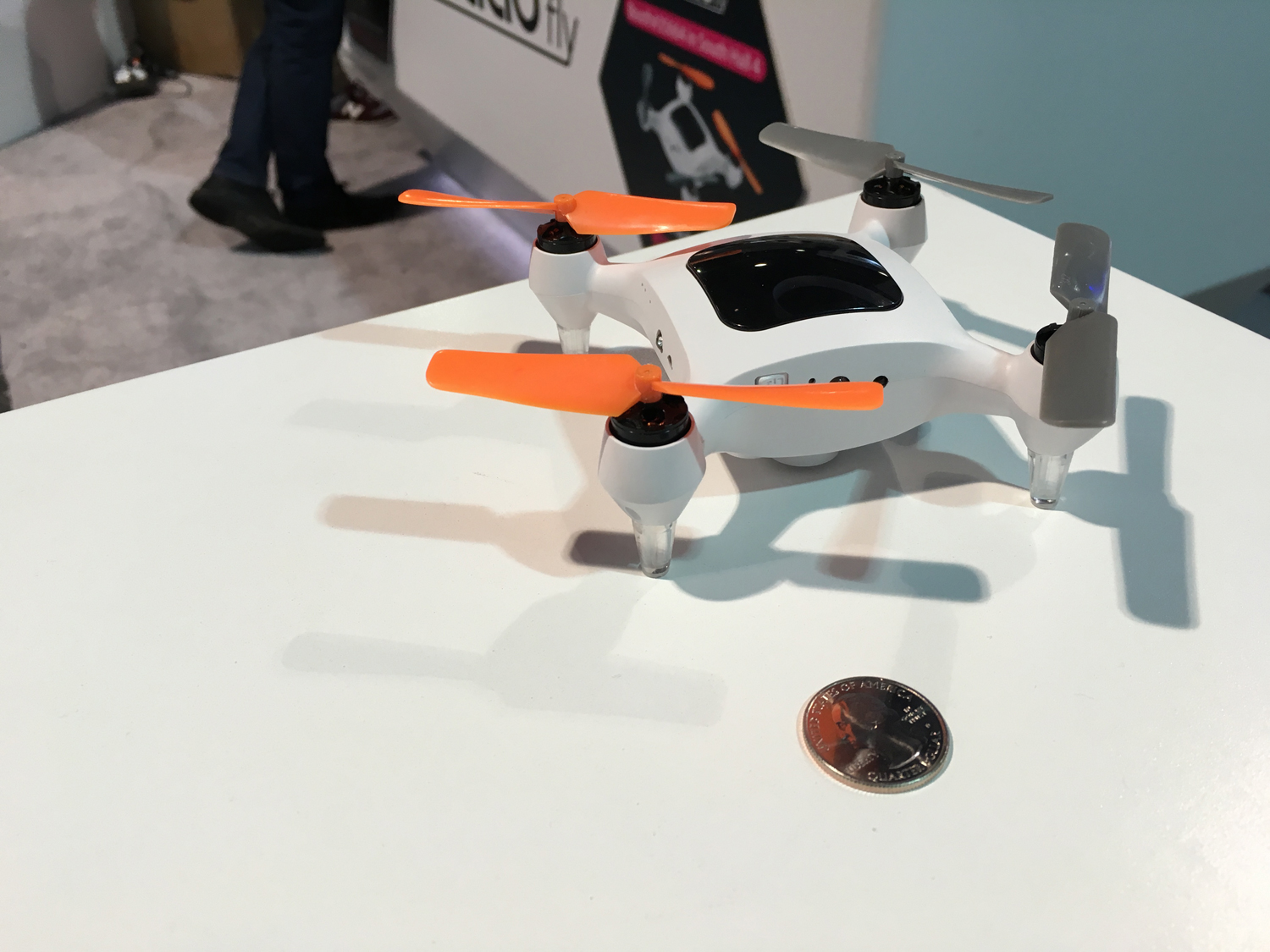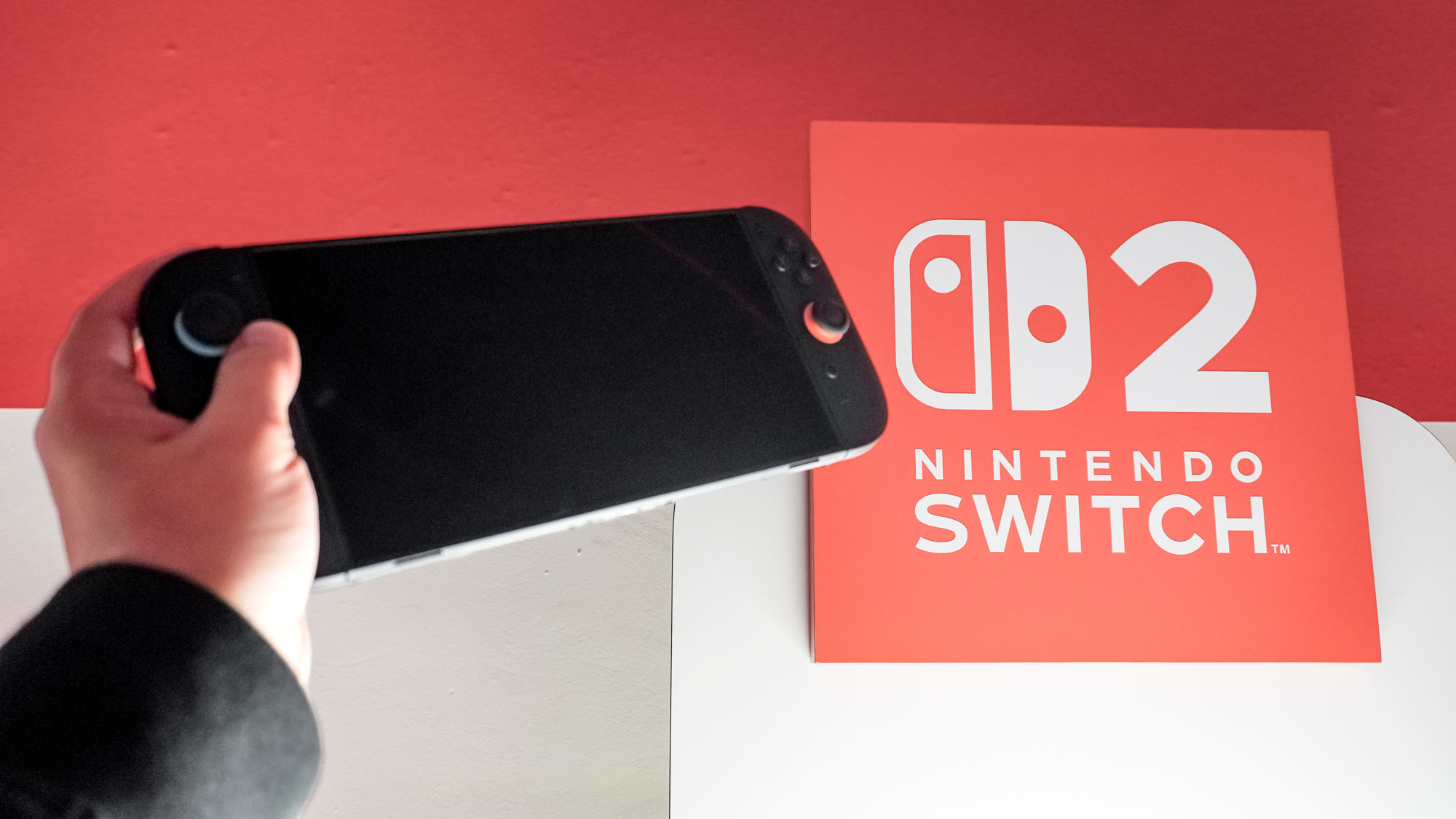Mini Drones Offer a Lot to Love for a Little Money
They don't cost a lot, they're packing in more features, and you don't have to register them with the FAA. It's no wonder that mini drones were generating a lot of buzz at CES this year.

LAS VEGAS — In many ways, CES 2016 proved to be a tale of two types of drones. In one part of the show floor, drone makers were introducing new designs like Parrot's fixed-wing Disco drone and the Typhoon H hexacopter from Yuneec (or, if you want to go even larger and less practical, eHang's autonomous passenger drone). Meanwhile in other parts of the massive Las Vegas convention center, some drone makers hoped to point out that great things don't necessarily require big packages.
Mini drones — devices so small they can land in the palm of your hand — were a frequent site at last week's CES, whether on display in exhibitor booths or buzzing above the show floor. It's another sign that even as drones get more sophisticated, adding features like 4K cameras and assisted autopilot, there's still demand for drones that pack a lot of features into a tiny aircraft.

Certainly, price explains a lot of the appeal of mini drones, particularly if you're a rookie pilot. "The consumer doesn't want to spend $500 [on a new drone] and then crash it," said Michael Faro, president of drone maker Mota. Just before the holiday shopping season, Mota released the JetJat Nano, a minuscule drone that at 0.86 x 0.86 x 0.79 inches, which is small enough to fit inside its controller. The $40 Nano is one of three JetJats Mota offers — the Nano-C will add a built-in camera while the Live-W will include live video streaming when they launch later this year.
Price is just one factor that attracts novice pilots to mini drones. The smaller planes are less intimidating to fly, giving new pilots a chance to get comfortable with controlling a drone before taking on a larger model.
MORE: What's Next for Drones: Super Selfies, GoPro Karma and Fuel Cells?
Take the Micro Drone 3.0, which boasts sophisticated features like fully inverted flight, but still offers controls that most any pilot can master. The Micro Drone was built to have an easy learning curve, said Yang Jiang, lead interaction designer for Micro Drone 3.0 maker Extreme Fliers, allowing most users to master the controls in one or two hours.
"If you can fly this one, you can fly all the other big drones," Jiang added, as she piloted the Micro Drone around and over CES attendees. Which is another aspect to the growing appeal of mini drones: You can fly them indoors without the risk to furniture that a larger model might pose.

The federal government provided another argument in favor of mini drones late last year when it announced a drone registry program that requires drone pilots to register their aircraft. However, drones weighing less than 0.55 pounds (or 250 grams) don't need to be registered, which means most mini drones are in the clear.
We've reviewed a couple of these little guys, such as the $35 Axis Aerius. We loved it for its cute design and ease of flying. However, we found it remarkably easy to lose. Axis is just one of many companies making mini drones. With tiny quadcopters buzzing around CES 2016, here's some more information on a trio of tiny fliers that caught my eye last week.
Micro Drone 3.0: Wrapping up a wildly successful crowdfunding campaign — Extreme Fliers took in a little less than $3.2 million last summer — the Micro Drone should start reaching backers this spring. The Micro Drone is currently available at discounted price of $175, which includes the drone, a remote control and a Google Cardboard-based virtual reality headset for a pilot's eye view of the drone's flight path.
At its CES booth, Extreme Fliers showed off some accessories like a newly designed battery that uses magnets to snap onto the Micro Drone 3 and a $50 gimbal that gives pilots control over video when their drone is in flight. At the show, Extreme Fliers also unveiled a new range extender that gives you a 500-foot range for video streaming, instead of the standard 300 feet.
This was my first chance to see the Micro Drone 3.0 up close, and I appreciated the curvy bumper around the quadcopter's four propellers that makes it safer to navigate. I also liked the drone's three speed settings — slow, fast, and the delightfully named "insane," which can get the Micro Drone zipping along at a 45-mph clip.
Onagofly: Onagofly launched a crowfunding campaign back last month, and like the Micro Drone 3.0, it's already blown past its funding goal. But CES offered the chance for our first up-close look at the mini drone that sports "follow me" technology, where the drone connects with your smartphone over GPS. The drone is available for a $199 preoder price; eventually its price tag will rise to $200.
That's pricey for a mini drone, though the Onagofly has a few other features going for it that you wouldn't associate with such a miniature device. A smile-recognition feature lets you toss the drone up into the air where it will hover near you and take a photo with its 15-megapixel Sony camera when it detects that everyone in the shot is smiling. Battery detection features mean when the Onagofly is running out of power — it can stay in the air for 12 minutes — it's smart enough to lower itself to the ground.
Pocket Drone: The $130 Pocket Drone from Odyssey Toys is about the size of an iPhone 6 — heck, from a distance, you might mistake it for a smartphone until the four embedded propellers pop out of the side. The design makes it easy to slip into a back pocket, and Odyssey Toys president Sal Irigoyen says the drone was designed with portability in mind.
But the drone, slated to be available in spring, also touts easy-to-master controls. The Pocket Drone's auto-hover feature keeps it at a particular altitude when you're flying the mini drone, letting you maneuver the device with just one stick of its remote control.
Sign up to get the BEST of Tom's Guide direct to your inbox.
Get instant access to breaking news, the hottest reviews, great deals and helpful tips.
Philip Michaels is a Managing Editor at Tom's Guide. He's been covering personal technology since 1999 and was in the building when Steve Jobs showed off the iPhone for the first time. He's been evaluating smartphones since that first iPhone debuted in 2007, and he's been following phone carriers and smartphone plans since 2015. He has strong opinions about Apple, the Oakland Athletics, old movies and proper butchery techniques. Follow him at @PhilipMichaels.

